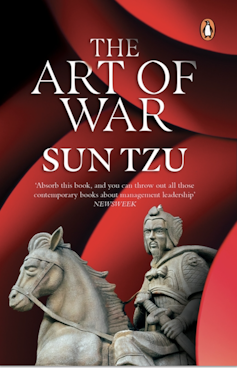The Art of War, the ancient Chinese war manual loved by edgelords and management gurus
- Written by Jamie Q Roberts, Lecturer in Politics and International Relations, University of Sydney

Quoting The Art of War, an ancient Chinese war manual dating from the 5th century BCE, has become a cliché. It is, alas, the hallmark of teen edgelords, management gurus and, as one of my students informed me, pseudo-intellectual boyfriends.
Because of all this, the book has become part of the endless layers of irony that are the bedrock of internet culture. Various memes both reference its famous lines, such as “know your enemy; know yourself” and “do not press a desperate foe too hard”, and make fun of this excessive referencing.





